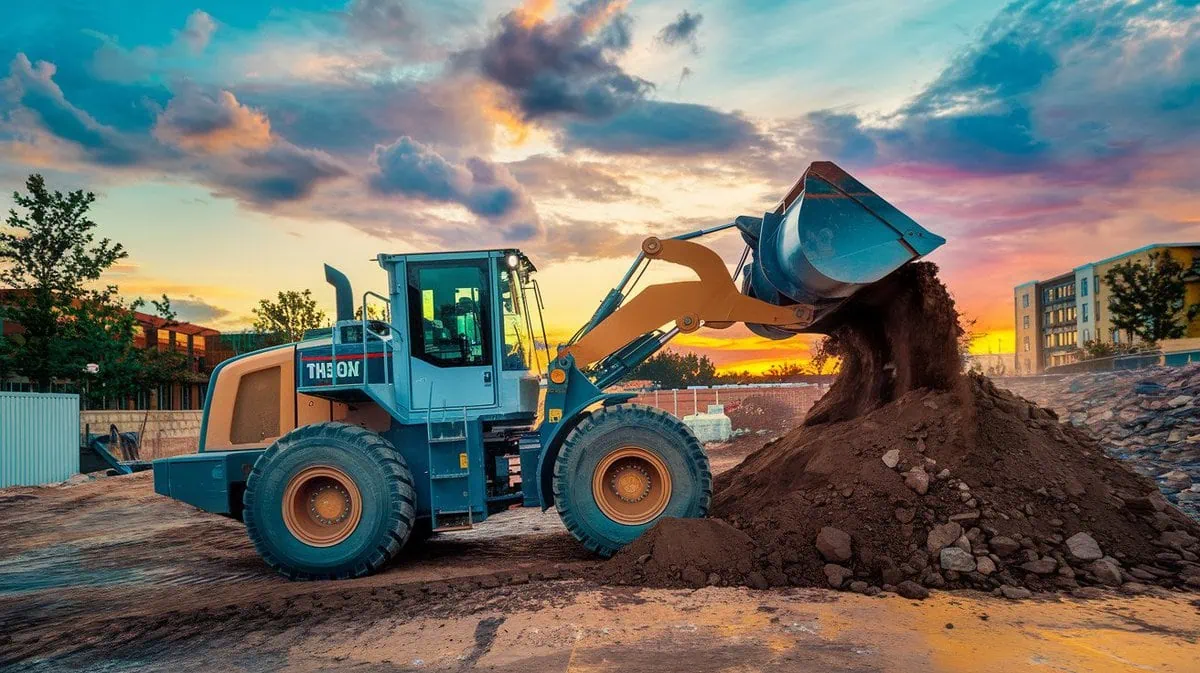Excavation work is everywhere in construction, from digging ditches and pipes and demolishing dangerous buildings to laying foundations. However, excavation is very risky. There is a possibility of soil collapse, which is dangerous to workers. This is where excavation shoring comes into play. In this guide, we’ll cover everything you need to know about excavation shoring.
What is Excavation Shoring?
Excavation shoring is a construction security measure that maintains the excavation site and avoids accidents. The trench or walls of the excavation being supported could fall apart, presenting an immense risk to workers.
The primary objective of shoring is to establish a stable and secure environment during excavation, thereby minimizing the risk of accidents such as cave-ins. According to the standards set by the Occupational Safety and Health Administration (OSHA), any excavation that exceeds a depth of 5 feet (1.5 meters) must incorporate a shoring or protective system.

When Is Shoring Required?
Excavation depth affects excavation shoring. Excavations deeper than 5 feet are generally documented to require support. However, this rule of thumb varies depending on soil type, weather, and other conditions. For example, loose, sandy soil may require shallower depth support than very solid rock. For depths greater than 20 feet, a more complex support system is almost always required.
Types of Shoring for Excavation
Several types of excavation shoring are available for different job needs. Here are the most common types of excavation shoring and their uses:
| Type of Shoring | وصف |
|---|---|
| Hydraulic Shoring | Uses hydraulic pistons for support; flexible, efficient, ideal for deep trenches in urban areas. |
| Timber Shoring | Traditional method with wooden beams; effective for small, shallow excavations, requires maintenance. |
| Pneumatic Shoring | Utilizes air pressure for stabilization; lightweight, quick installation for loose soil conditions. |
| One-Sided Excavation Shoring | Stabilizes one side of excavation; suited for tight spaces next to structures or walls. |

Applications of Shoring
Shoring is used in a wide range of excavation projects to make sure the excavation remains stable and safe during construction. Here are some common uses of shoring:
| Type of Excavation | Purpose of Shoring | الميزات الرئيسية |
|---|---|---|
| Utility Excavations | Ensures safe digging for gas, water, or electrical lines. | trench shoring to prevent soil collapse. |
| Foundation and Basement | Maintains structural integrity and prevents wall collapse. | Heavy-duty systems (hydraulic, soldier pile). |
| Roadwork and Drainage Systems | Protects workers and minimizes accidents during pipe/cable laying. | Restricts disruption to traffic/buildings. |
| High-Risk Environments | Mitigates risks in unstable soil or urban sites. | Uses specialized techniques (hydraulic, pneumatic). |

How to Choose the Right Trench Shoring Equipment
Choosing the right trench shoring equipment is essential for the success of your excavation project. Here are a few factors to consider when selecting shoring equipment:
- To begin, soil conditions are critical: sandy or loose soils require stronger support systems such as hydraulic shoring to prevent collapse, whereas hard rock may require minimum support.
- The depth and size of the excavation will also influence the choice: for minor excavations, timber or pneumatic shoring may suffice, but deeper excavations require more robust systems, such as hydraulic shoring or bollards, for proper support.
- Furthermore, the utilization of the equipment must be considered. Flexible systems such as hydraulic shoring or trench boxes are useful in small or limited places, while older methods such as timber shoring may be appropriate in more open areas.
- Finally, the project’s duration is a crucial consideration while selecting equipment. Short-term projects require pneumatic or hydraulic systems because they are easy to install and remove, while long-term projects may require more durable solutions, like bollards, for continued support.

Disadvantages of Shoring
While shoring provides vital protection during excavation, it does come with its own set of challenges.
Cost and Material Expenses
Shoring materials, especially hydraulic and pneumatic systems, can be costly. Installing and maintaining shoring systems may incur major costs for your excavation project.
Design Complexity
Shoring systems, especially for deep excavations, require detailed design and engineering expertise. This can be time-consuming and may require the involvement of a structural engineer to ensure that the shoring system meets safety standards.
Space Constraints
In some cases, space constraints make it impossible to install scheduling systems. For example, in metropolitan locations with limited excavation space, shoring installation must be done with care to avoid interrupting surrounding structures or services.
خاتمة
Excavation shoring is an essential part of safe excavation methods. It keeps excavation walls sturdy, safeguarding workers from the risks of soil collapse. Understanding the many types of shoring systems and their applications is critical for anyone working on utility installations, roadwork, or foundation excavation projects. When selecting trench shoring equipment, consider soil conditions, excavation depth, and project duration. While shoring systems can be costly and sophisticated, they play a vital role in maintaining safety and regulatory compliance. You can maintain your excavation projects safe, efficient, and regulatory-compliant by using the correct equipment and adhering to shoring standards.
Call To Action
Are you ready to ensure that your next excavation job is safe and stable? Do not jeopardize your workers’ safety—choose the correct shoring equipment today. Whether you are working with loose dirt or deep excavations, we have the answers you need. Contact us today to discuss your excavation needs and receive expert ideas on the finest shoring options for your project!






